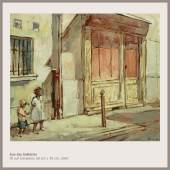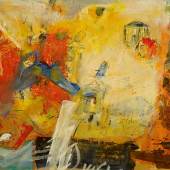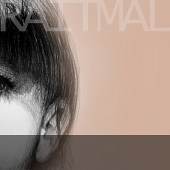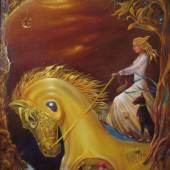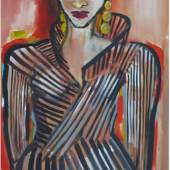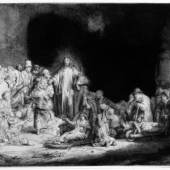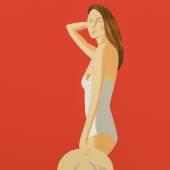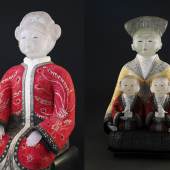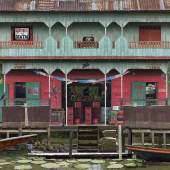International Art Fair
Art Concept, MIAMI 2016
-
Messe29.11.2016 - 04.12.2016
Certainly, the environment for the fine arts was quite different as Cuatrecasas entered Harvard because two wars had just ended. No sooner had Paris been liberated from the Germans than Picasso, Matisse, Breton, and Duchamp surrendered a parallel war to a group of irascible young Abstract Expressionists in New York — led by Pollock, Rothko, DeKooning, and Kline. From that point on New York would be the epicenter of the art world. Esteban Vicente [1903–2001] remains the best-known Spanish artist to have fled Madrid for New York, becoming a member of that group of action painters in 1936. However, for most of Cuatrecasas’s generation of Spanish artists born in the 1920s–30s few would escape the pervasive influence of that great triumvirate of Spanish modern masters that preceded them: Picasso, Dalí, and Miró. As far as Abstract Expressionism was concerned, the strongest works in Spain included the heavily-textured mixed-media abstractions by Antoni Tàpies [1923–2012] and the figurative expressionism of Antonio Saura [1930–1998]. Notable, too, are the floating geometric shapes of Albert Ràfols-Casamada [1923-2009], the heavily-textured collages of Manolo Millares [1926–1972], and the exuberant play of circular shapes with action painting in the work of Joan Tharrats Vidal [1918–2001].
Cuatrecasas appreciated the seminal importance of Spain’s modern masters but felt compelled to follow a different path. Upon graduation from Harvard in 1957 he entered the highly selective graduate program at the Yale University School of Art, which had been headed by Josef Albers since 1950. Albers had immediately established a distinguished faculty and attracted important visiting teachers such as Willem de Kooning and Stuart Davis. Cuatrecasas was fortunate to have studied under Albers during the master’s final years at Yale. Even though Albers’s influence was profound, Cuatrecasas was restless and anxious to establish himself, so just before graduation he suddenly left Yale and set up a studio in the garage of his parent’s home in Washington, D.C. They had moved to the capital after his father accepted a position as a chief botanist with the Smithsonian Institution. Gil attended the Corcoran School of Art and became associated with a group of artists — including Gene Davis, Thomas Downing, Sam Gilliam, Kenneth Noland, and Morris Louis — who would later become known as the Washington Color School. From 1960–1961, he studied in Mexico City under a grant from the Pan-American Union (now the Organization of American States). When he returned to Washington he rejoined his colleagues and in 1964 their exhibition, “Nine Contemporary Painters,” appeared at the Pan-American Union curated by Lawrence Alloway of the Guggenheim Museum in New York. James Harithas, the director of the Corcoran Gallery of Art, had long been following Cuatrecasas’s development and in 1965 gave him a solo exhibition. “Very few people know how to paint,” commented Harithas, “and Gil was one of the brighter students who really stood out as very promising.” 1
A Unique Style Emerges in Spain
Unfortunately, parallel with Cuatrecasas’s early success he suffered some depressing experiences. First, the promise of marriage to a woman with whom he had fallen in love while at Harvard fell apart. Next, his dealings with art galleries, and the related financial issues left him deeply disenchanted. He sought to avoid the increasing social obligations that two significant exhibitions had placed upon him and shunned dealing with galleries. In 1966, shortly after his solo exhibition at the Corcoran, he moved to Barcelona, living in the apartment of an aunt — Montserrat Cuatrecasas — with whom he had a close relationship. He promptly converted one of her large bedrooms into a studio. His aunt, who became the first Director of the Miro Foundation’s Library and Documentation Centre at the Centre for the Study of Contemporary Art, became so impressed by the quality of his work and the intensity of his commitment, that she suggested a major move. In 1970 she invited him to move into her large villa outside of Torino, Italy. There she allowed him to transform most of her home into a huge studio — thereby enabling him to paint very large canvases. This expansive environment in Torino would prove the catalyst for the fulfillment of his artistic vision. During the next seven years the style that had begun to emerge in Washington and Barcelona entered its full bloom. Focused and prolific, Cuatrecasas covered the vast floors with canvas and produced hundreds of large paintings from eight to twenty-two feet long. Eventually, layers of paint concealed the beautiful marble floors and stacks of stretched paintings leaned against all the walls.
- << MasterArt Paris at La Biennale
- zurück | vor
- PARALLEL VIENNA 2016 >>
-
Schließlich nimmt Rembrandts mit dem Amsterdamer Kunsthändler Hendrik van Uylenburgh...
-
29.11.2016 - 04.12.2016Messe »
Concept fair tickets
One-Day ticket $20
Multiple Day Ticket $30
Group Tickets (10 or more) $122016 Opening Days
Wednesday, November 30, 1pm – 10pm
Thursday, December 1, 1pm – 10pm
Friday, December 2, 1pm – 10pm
Saturday, December 3, 1pm – 10pm
Sunday, December 4, 1pm – 7pm
